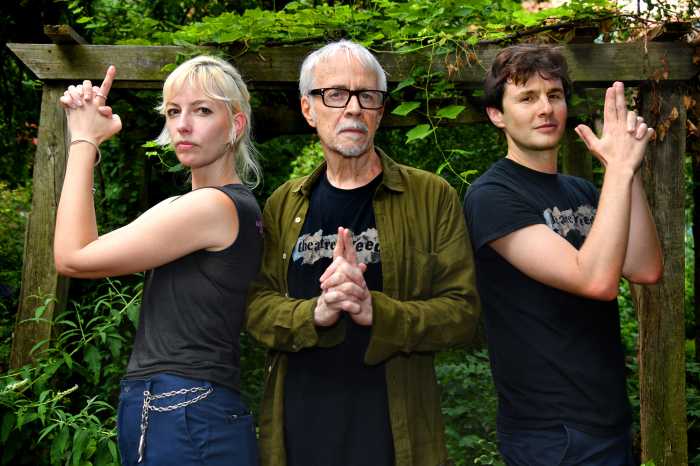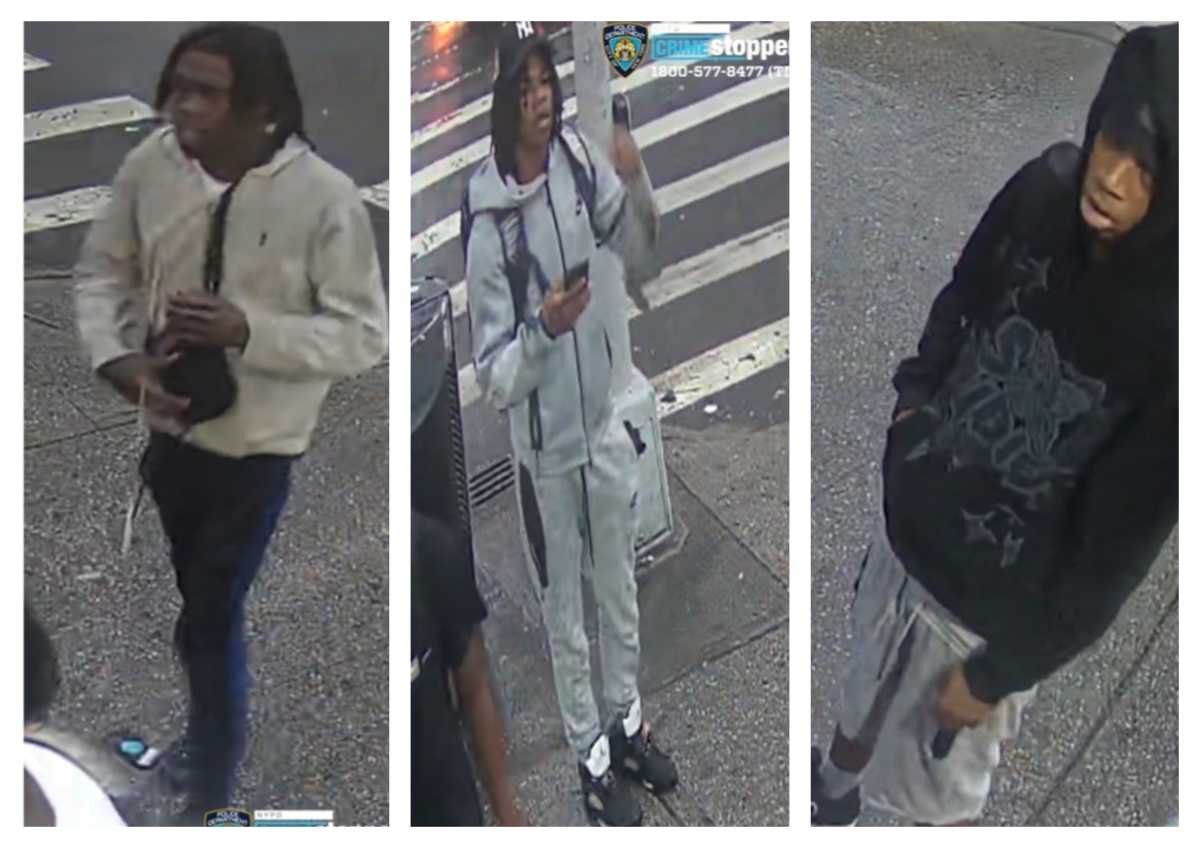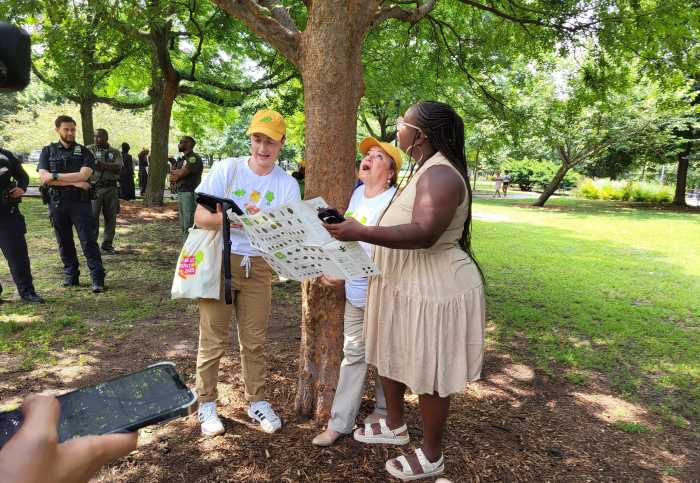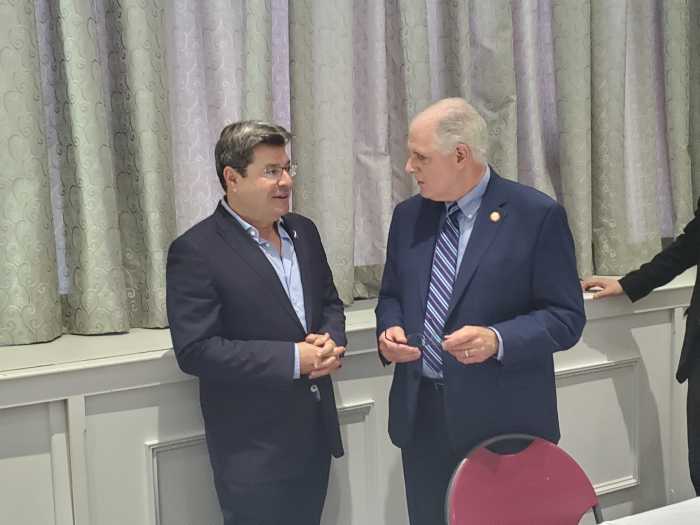Got a charge out of Con Ed
To The Editor:
Re “End the PAC delay” (editorial, April 21):
While we agree with The Villager that Lower Manhattan needs economic recovery projects post-9/11, utility customers should not be asked to bear the burden of funding a new project.
Part of the recovery funds allocated by Congress belongs to Con Edison customers whose money paid to help restore and rebuild Lower Manhattan following the terrorist attacks. The funds were allocated by Congress to reimburse utilities and their customers for costs incurred in the recovery effort.
Con Edison and its customers have received only partial reimbursement for the recovery efforts, $161 million to date. Another $176 million is pending.
For the past nine years, we have been working side by side with sate, city and federal agencies to rebuild the area’s critical infrastructure.
We continue to work with the Lower Manhattan Development Corporation on the reimbursements, and we believe that the remaining money should be spent on what Congress and the original legislation intended.
John Banks
Banks is vice president of government relations at Con Edison
‘Oh Villager, you were so blind’
To The Editor:
Re “When St. Vincent’s went silent” and “After St. Vincent’s” (news article and editorial, May 5):
It is interesting to see the current articles, letters to the editor and even your current editorial, expressing shock at the financial fraud St. Vincent’s Hospital perpetrated while it was arguing its grand development plan at a time when it ought to have committed those resources to trying to ensure its survival.
Along with the electeds and misguided members of the public, The Villager itself was an enabler — blindly accepting and vigorously supporting St. Vincent’s plan. Even absent the debt that brought them down, it was apparent to those of us opposed to their plan that it was financially flawed. They proposed an $800 million-plus construction with only $310 million coming from Rudin. Where was the rest to come from, and how could such a lengthy project save an institution so perilously close to running out of money, as they did?
St. Vincent’s refusal to file for financial hardship in its quest to demolish O’Toole should have been the red herring to tip all of you off that they were in dire straits. It certainly caught our attention as we repeatedly asked to see their books. So now we all will suffer through the loss of the hospital when their project cheerleaders, The Villager included, could have counseled them otherwise.
David R. Marcus
Marcus is vice president, The Cambridge Owners Corp.; a founding member, Protect the Village Historic District; and a plaintiff in P.V.H.D.’s lawsuit against the city’s Landmarks Preservation Commission et al. regarding St. Vincent’s Hospital’s rebuilding project on its O’Toole building site.
Legal vendors were heroes
To The Editor:
The recent bombing attempt in Times Square clearly shows that legal vendors (I include fine artists) are a huge advantage to New York City. Due to the fact that they stand in the same location on the sidewalk or in a park for many hours on end, vendors see things in a different way than a passerby, shopkeeper or neighbor. They see minute changes and dangers others would not perceive.
This bombing attempt is a case in point. The legal vendor (a war veteran) knew the police officer. Their shared hours on the sidewalk had created a familiar and trusting relationship between the two. In the first crucial moments of this incident, the vendor initiated a chain of events that alerted authorities — all the way up to the president — and led to the evacuation of the public to safety.
Yet this does raise a significant question. What if this vendor had been a bootlegger or unlicensed merchandise vendor? There is reasonable doubt whether someone involved in illegal activity would approach the police in such an emergency. In fact, it would seem natural that a person involved in illegal activity would run away.
Therefore, common sense dictates that a pro-legal vendor policy is good for our civic health. Hopefully, this will be part of the discussion as new vending regulations are being considered by the city.
Lawrence White
Glaring omission of Mom
To The Editor:
Re: “The ‘kids’ are all right, thanks to council program” (news article, May 5):
John Pettinato and others certainly deserve a lot of credit for getting things where they are today.
But I couldn’t help but notice the glaring omission of my beloved mother — Jeanne Otter — and her significant contribution and dedication to the children of the neighborhood, through the Pompeii Youth Program, from the mid-1970s until her death in 1988. She worked tirelessly and for the most part with zero financial compensation, unlike some others.
In fact, the “Joy Center” referenced in your article is an acronym for “Jeanne Otter Youth” — the center is named after her, although there is no mention of her on the Greenwich Village Youth Council Web site.
Ned Otter
Historic Henry buildings lost
To The Editor:
Two of the oldest structures in New York were just demolished on Henry St., Nos. 22 and 24: a four-story row house and, next to it, a diminutive, narrow town house. Both must have dated at least as far back as the 1820s; the town house may have dated back further. I did not have time to inquire about what is replacing it, but there is a girder structure up already.
They were a striking little piece of the early 19th century, unusual because of the pairing of a town house with dormers adjacent to a row house with a fully built fourth floor covered by a unique wood awning in lieu of a cornice. I always took visitors to see them on the Chinatown/Five Points tour. After the Mooney House (at Pell St. and Bowery), they were the oldest buildings around, and almost unaltered.
The demolition of a town house in Greenwich Village would spark a protest, an outrage and an angry movement. But far to the east in Chinatown, no preservationists seem to notice or care. And yet, these two small buildings were probably older than anything in the Village, and in a neighborhood with a much longer and complex history.
Rob Hollander
Gerrymandering 101
To The Editor:
Re “Koch draws the line” (Scoopy’s Notebook, April 28):
The Loisaida section of the East Village was harmed when the Assembly district lines were redrawn in 1980, 1990 and 2000. Reapportionment followed each census, thus splitting not only our neighborhood, but the Lower East Side community as a whole, into two Assembly districts.
To hear Assemblymember Silver tell it, the incumbent assemblymembers and state senators should continue to redraw these lines because they and they alone are the only ones capable of protecting our neighborhoods and insuring the incumbent party’s control over the New York State Legislature.
Reapportionment goes beyond which political party controls a legislative seat and the Legislature itself; it is used to disenfranchise voters and entire neighborhoods, to divide one’s opposition, to unfairly distribute services to one’s constituency and to facilitate the incumbent’s re-election.
Considering the current state of affairs in Albany, why would anyone in his or her right mind want to allow the state Legislature to continue to redraw their own lines? As it is, they can’t pass a budget on time, they spend what they don’t have and they borrow in order to balance a budget. Is this any way to run a government?
Former Mayor Ed Koch is proposing the creation of an independent, nonpartisan commission. Who do you think stands to benefit by this — the incumbents or the voters? After Koch gets done with this one, he should consider term limits for the entire Legislature.
Roberto Caballero
Mourning activist’s death
To The Editor:
Re “‘A huge activist,’ Harry Wieder is killed by a cab” (news article, May 5):
I am so sad and angered by Harry Wieder’s death.
I only knew Mr. Wieder through witnessing his dedicated volunteerism on Community Board 3 and its Traffic Committee, on which he served for years. He was always very purposeful, serious about the issues and prepared.
At one meeting, I remember him approaching the Department of Transportation representatives armed with data about pedestrian street-crossing times in the Lower East Side, versus the amount of time that pedestrians actually got during lights. He included average crossing speeds for the elderly and the disabled, which he gathered through repeat crossings and observations. He pushed for more time for the pedestrians and for islands to be added in the thoroughfares for the disabled to rest or take shelter from dangerous traffic.
It is so horrible that Mr. Wieder lost his life in a traffic fatality after a community board meeting.
I hope a street or a park on a traffic island gets named for Harry Wieder, and that a non-car traffic safety law will be passed in his name or memory. I think such steps might help reduce the 300 pedestrian and cyclist fatalities each year in New York City caused by motor vehicles. It would be an appropriate memorial to a fine and inspirational man.
Jared Goldstein
J’accuse — of cat cruelty
To The Editor:
Re “The cat and the casket; A ‘tail’ of Jules and Mygal” (notebook, by Patricia Fieldsteel, May 5):
Uh, what? Did I miss something? Killing all the kittens that he couldn’t find homes for, bringing dozens and dozens of generations of cats whose fate is to possibly starve, be hit by cars or killed by him? I know the author did not agree with this and told Jules he really shouldn’t do it. But somehow, I don’t think readers can be expected to ingest a story that drops these bombshells, and come away from it anything but nauseous and outraged.
I have eccentric “character” friends that live life on the edge, too, and if I knew any of them were doing this, I would have reported them to authorities years before. I am sure, even in France, there are organizations that would not allow such a condition to continue, if it could be stopped. This is a “human interest” piece? Give me a break!
Nick Fritsch
E-mail letters, not longer than 250 words in length, to news@thevillager.com or fax to 212-229-2790 or mail to The Villager, Letters to the Editor, 145 Sixth Ave., ground floor, NY, NY 10013. Please include phone number for confirmation purposes. The Villager reserves the right to edit letters for space, grammar, clarity and libel. The Villager does not publish anonymous letters.





































